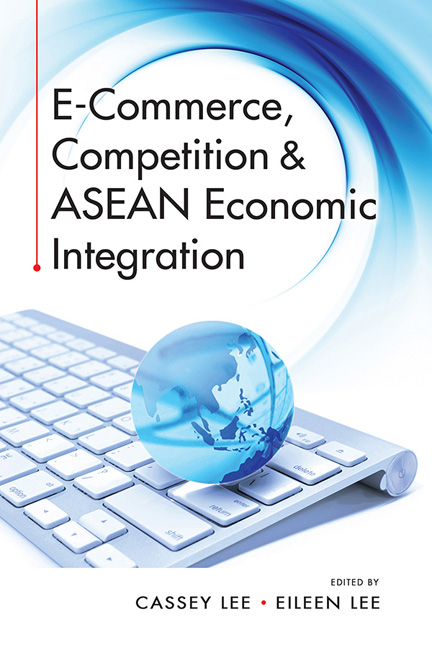2 - E-commerce and ASEAN Economic Integration
from PART I
Published online by Cambridge University Press: 31 January 2020
Summary
Introduction
The ASEAN region is fast emerging as a growing market in the global e-commerce landscape. With a total population of 650 million, a rising middle class and a newly established economic community in 2015, the region is often considered as the next gold rush for e-commerce and internet-based operations. Despite the hype about the potential of the region, many challenges remain before e-commerce can truly flourish in each ASEAN member country. Cross-border e-commerce is challenging in the ASEAN region due to different national rules and regulations as well as quality of infrastructure. It is with these developments in mind that e-commerce has become an increasingly important area of focus in ASEAN economic cooperation.
This chapter examines the role played by e-commerce in ASEAN economic integration by focusing on a number of issues. We begin by discussing some of the basic concepts and definitions related to e-commerce in Section 2. This will then lead to an examination of the state of e-commerce in the ASEAN region in Section 3. Section 4 discusses the framework for ASEAN cooperation in the development of e-commerce and some of the challenges that lies ahead. Section 5 concludes.
Definition, Concepts and Framework
Defining E-commerce
OECD provides a comprehensive definition of e-commerce:
An e-commerce transaction is the sale or purchase of goods or services, conducted over computer networks by methods specifically designed for the purpose of receiving or placing of orders. The goods or services are ordered by those methods, but the payment and the ultimate delivery of the goods or services do not have to be conducted online. An e-commerce transaction can be between enterprises, households, individuals, governments, and other public or private organisations. To be included are orders made over the web, extranet or electronic data interchange. The type is defined by the method of placing the order. To be excluded are orders made by telephone calls, facsimile or manually typed e-mail.
The key emphasis in the above definition is on transactions carried out over computer networks which today mostly involve the internet. The definition also suggests that the delivery of goods and services does not have to be conducted online.
- Type
- Chapter
- Information
- Publisher: ISEAS–Yusof Ishak InstitutePrint publication year: 2019

